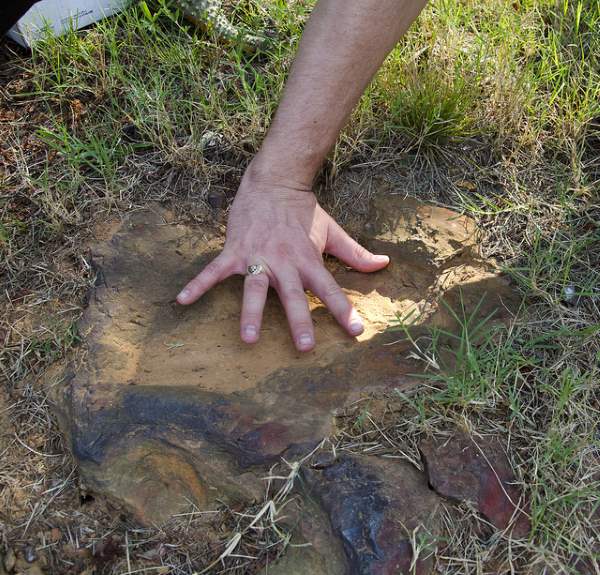In the courtyard of NASA, you will find traces of dinosaurs dating back to about 100 million years ago. In what is now the Goddard Space Flight Center, dinosaurs and mammals of various kinds walked millions of years ago
He is about to end up run over, his mother saves himDinosaurs strolling around NASA headquarters: Cretaceous 'Rosetta Stone' found
In the courtyard of NASA, you will find traces of dinosaurs dating back to about 100 million years ago. In what is now the Goddard Space Flight Center, dinosaurs and mammals of various kinds walked millions of years ago.
This was revealed by NASA, which recently published the results of a study in the magazine Scientific Reports. The find offers a rare combination: mammals and dinosaurs interacting with each other.
In 2012, dinosaur expert Ray Stanford discovered a trace of a nodosaur that lived in the Cretaceous period on the current campus of the Goddard Space Flight Center in Greenbelt, Maryland. Later, paleontologist Martin Lockley, of the University of Colorado at Denver, and other scientists found more than 70 dinosaur and 26 mammal traces imprinted on a large slab of sandstone 2,5 meters long and about one meter wide.
The traces were discovered by Ray Stanford almost by accident. After accompanying his wife Sheila who works at Goddard, Stanford noticed a strange rocky outcrop behind Shelia's building on a hill. He parked the car and found a dinosaur footprint about 30 inches long. The excavation revealed that the slab was the size of a dining table, and examination in subsequent years found that it was covered with numerous well-preserved traces.
So far, the footprints detected belong to 8 different species, ranging from mammals the size of a squirrel to dinosaurs the size of a tank. Analysis suggests that all the tracks were likely made within days of each other in a location that may have been the edge of a wetland.
"The concentration of mammalian traces on this site is higher than any other site in the world," he said Martin Lockley, paleontologist at the University of Colorado, Denver, co-author of the new paper. “I don't think I've ever seen a plate of this size”.
After the initial Stanford find, Stephen J. Godfrey, curator of paleontology at the Calvert Marine Museum, coordinated the excavation of the slab and produced the mold.
The first trace found by Stanford was of a knotweed, "a four-legged tank". Subsequent examination revealed a footprint of a baby nodosaurus next to it while the others belong to a sauropod, small theropods, carnivorous dinosaurs closely related to Velociraptor and Tyrannosaurus rex, and pterosaurs, a group of flying reptiles. "It's a time machine," Stanford added.
The dinosaur tracks are impressive, but it is the collection of mammalian tracks that makes the sandstone slab so special. Since the 2012 discovery, at least 26 mammalian traces have been identified, making it one of two known sites in the world with such a concentration of footprints. Additionally, the slab also contains the largest mammalian record ever discovered since the Cretaceous period.

According to the scientists, the wide diversity and number of tracks show that many of the animals fed in the area around the same time. Perhaps mammals fed on worms and larvae, small carnivorous dinosaurs followed mammals, and pterosaurs could have hunted both mammals and small dinosaurs.
"This may be the key to understanding some of the smaller artifacts in the area," Lockley said. "It is the Cretaceous equivalent of the Rosetta Stone."
READ also:
- Scientists have discovered the strangest dinosaur that ever lived
- The first mammals lived in the time of dinosaurs, this is how they were (PHOTO AND VIDEO)
- The best places in the world to walk with dinosaurs
Francesca Mancuso
Photo: NASA


























